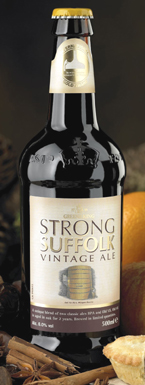The Laws of the Pie
An authentic steak and ale pie must have a shortcrust pastry lid and come in an oven-proof porcelain or ceramic dish. To truly impress, it must contain the largest amount of actual meat ever seen in a pie. It must always be piping hot when received and stay that way, thanks to the heat-conservation properties of the dish. A truly authentic pie must also arrive accompanied by a selection of potatoes and seasonal vegetables to give balance to the whole meal.
Pie Facts
There are several factors that influence the outcome of an outstanding steak and ale pie:
- The Dish – You need one that holds heat well, so use a shallow ceramic crockpot or traditional pie dish.
- The Meat – You need a good cut of beef, well-trimmed and suitable for long, slow cooking. A quality stewing or braising beef works best.
- The Ale – For the sake of authenticity, this must be a traditional ale, even a stout will work, but if it is too bitter, you will need to tone it down with a dash of sugar. Some have been known to use cider or porter, and these are acceptable as variations on a theme. The ale provides a marinade base, into which you need to place your prepared, trimmed and cubed beef for at least two hours prior to cooking.
- The Pastry – A truly traditional pie will be lovingly topped with a homemade shortcrust pastry. However, there are not many who will go down the route of preparing the pastry from scratch for a single pie. Enter the supermarket knight on its trusty steed carrying the ready-made packet of pastry. Buy it. Making it is a pain.
Seasoning
Salt and ground black pepper are the king and queen of seasoning and nutmeg is the prince. You massage the nutmeg and pepper into the meat before cooking and can add them to the marinade as well. However, keep the salt well away until the meat is cooked! Salt will pull the moisture out of the meat, making it tougher.
This dish needs a little more than just salt and pepper though; it needs a kick. You may think chilli would do it but you would be wrong. Think British, think authentic. That leaves you a choice of two items: mustard or horseradish. You pick, but don't overdo it this is comfort food after all.
Making the Pie
Ingredients:
I used Strong Suffolk Vintage Ale, make by Greene King. It has a very dark colour and almost-burnt caramel-y taste without being overpowering. I strongly recommend it. |
 |
Method
1. Place the beef in a non-metallic dish, having rubbed the meat with nutmeg and pepper, then cover with the ale of your choice and set aside for a couple of hours. You could do this the night before and place the dish, covered, in the bottom of your fridge.
2. When you are ready to begin the cooking process, bring out your dish of marinaded beef and set it aside. Place a pan on medium heat, drizzle some oil into it, chop the onion finely and drop it in to sautée gently. When the onion is a pale golden brown, take out your beef, piece by piece, dust with flour and drop into the pan to brown gently. Whisk the rest of the flour, the salt, the thyme and mustard or horseradish into the marinade mixture left in the dish. Once you have browned the beef sufficiently, slowly add the marinade mixture, the bay leaves and the mushrooms then leave to simmer and reduce.
3. While waiting for the liquid to reduce, roll out your pastry on a floured board. The stew needs to be moist but not wet when cooked, bearing in mind that some evaporation will take place in the oven. When it is ready, add the frozen peas and mix well. Ladle the stew into your dish (remove the bay leaves) and drape the pastry over it. Using a knife, trim the edges and make a hole in the top. Fold in the edges of the hole and use your knife to press into the pastry around all the edges and make a scalloped pattern – for a really professional look, you may decide to cut out little patterns and add them around the edges of the hole. Brush the top of the pastry with a little whisked egg yolk to glaze.
4. Place in a pre-heated medium oven at about 200for about 30 minutes, or until the pastry is golden brown and crisp. You should expect some variation in cooking from different ovens. Some hold moisture in, some allow it out, some distribute the heat with a fan, others insist on charring the top or bottom of your creation. The time and temperature offered here are in the way of a generalised pointer. If you are uncertain how your oven will perform, keep your eye on proceedings and use the colour of the pastry as a guide. Golden brown and crisp is your aim.




